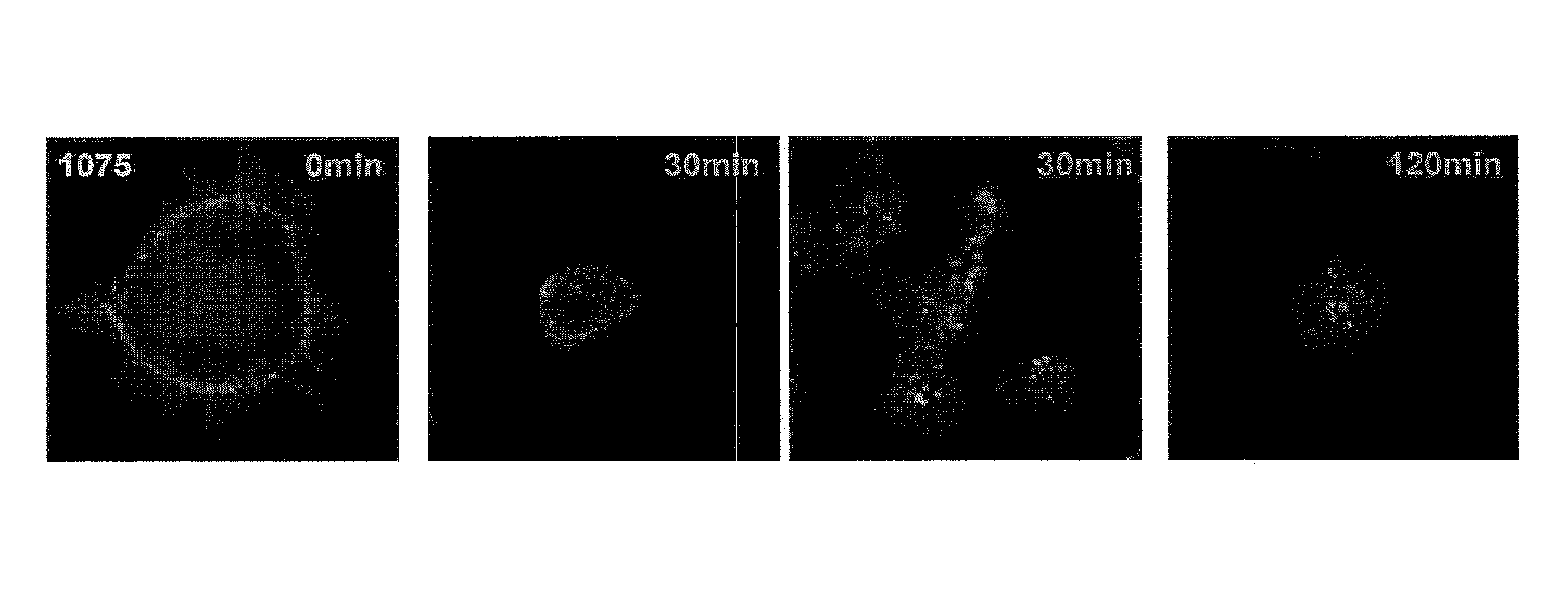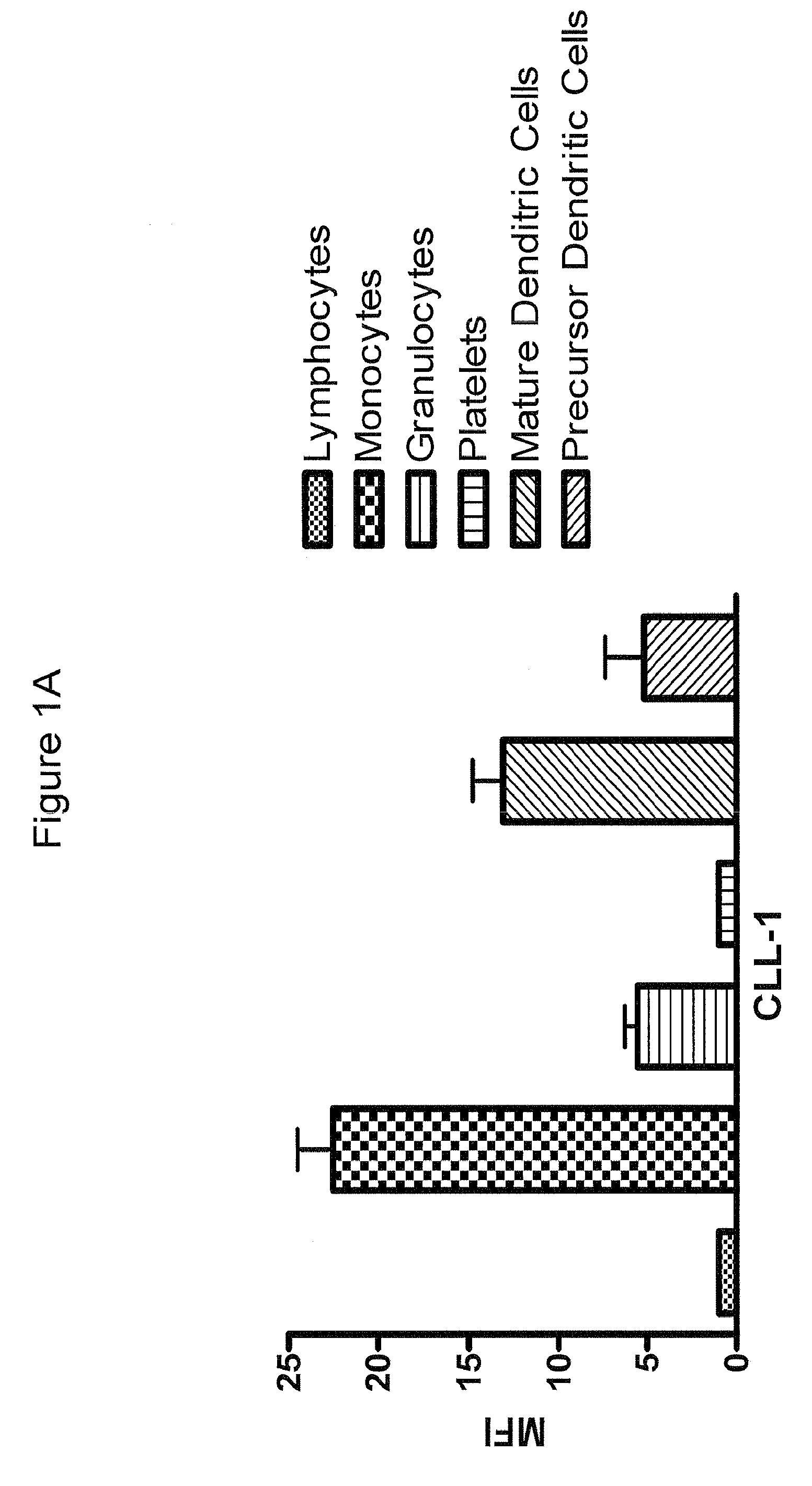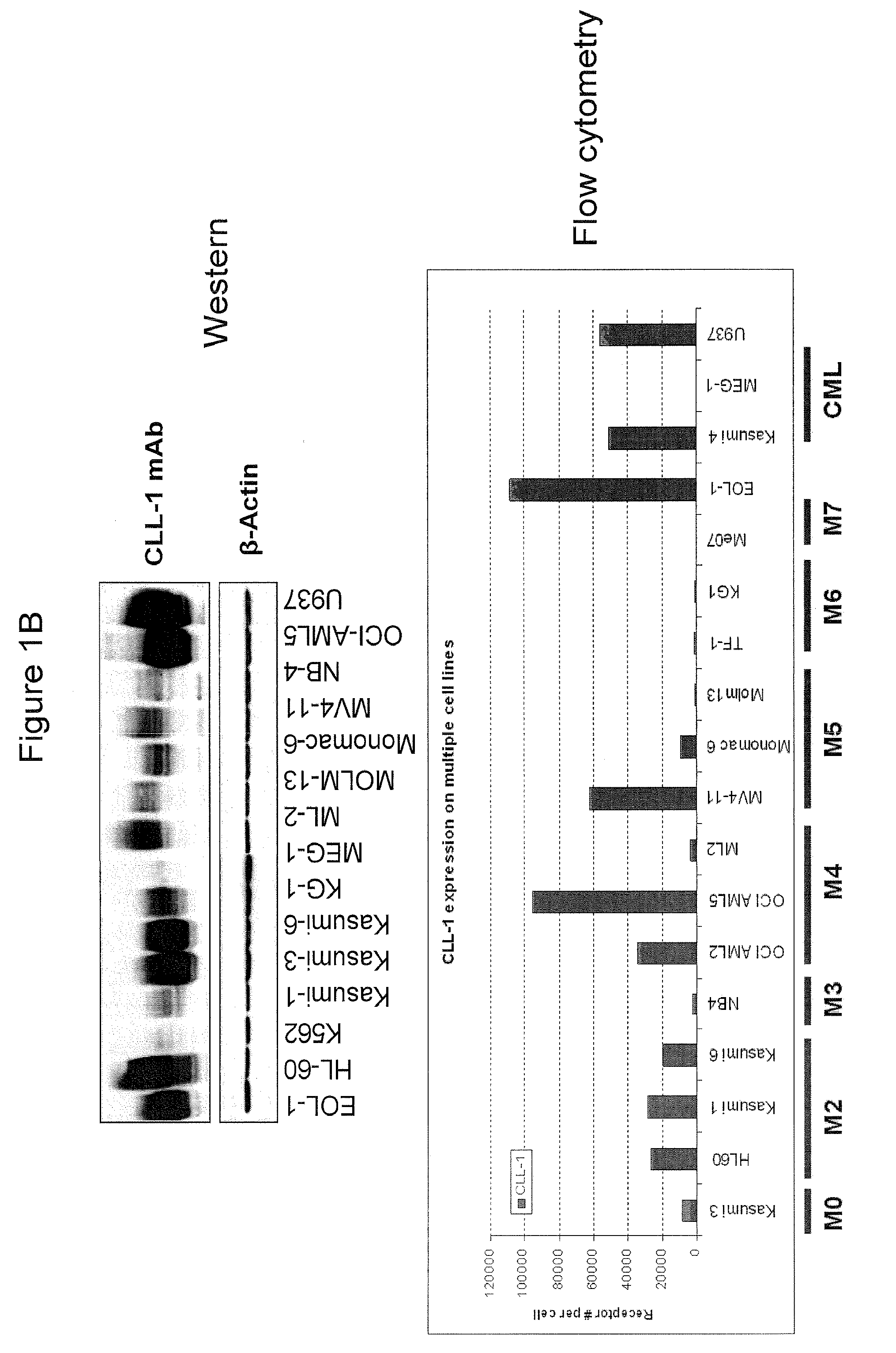Antibodies to cll-1
a technology of anti-cll-1 and antibodies, applied in the field of anti-cll-1 antibodies, can solve the problems of reducing the ability of cells to present antigens, impeding the immune response against tumor-specific antigens, and currently available therapies for hematologic malignancies carrying adverse and often severe side effects, and achieve high affinity
- Summary
- Abstract
- Description
- Claims
- Application Information
AI Technical Summary
Benefits of technology
Problems solved by technology
Method used
Image
Examples
example 1
[0380]Generation and Production of Recombinant CLL-1 Protein
[0381]A. Molecular Cloning of CLL-1
[0382]A human cDNA library was used as a template to amplify the extracellular domain of CLL-1 by PCR. The resulting fragment with the following sequence was cloned into pIntron.IgKsigP at NheI / NotI restriction sites:
(SEQ ID NO: 12)ATAGAAATGAAAAAAATGAACAAACTACAAAACATCAGTGAAGAGCTCCAGAGAAATATTTCTCTACAACTGATGAGTAACATGAATATCTCCAACAAGATCAGGAACCTCTCCACCACACTGCAAACAATAGCCACCAAATTATGTCGTGAGCTATATAGCAAAGAACAAGAGCACAAATGTAAGCCTTGTCCAAGGAGATGGATTTGGCATAAGGACAGCTGTTATTTCCTAAGTGATGATGTCCAAACATGGCAGGAGAGTAAAATGGCCTGTGCTGCTCAGAATGCCAGCCTGTTGAAGATAAACAACAAAAATGCATTGGAATTTATAAAATCCCAGAGTAGATCATATGACTATTGGCTGGGATTATCTCCTGAAGAAGATTCCACTCGTGGTATGAGAGTGGATAATATAATCAACTCCTCTGCCTGGGTTATAAGAAACGCACCTGACTTAAATAACATGTATTGTGGATATATAAATAGACTATATGTTCAATATTATCACTGCACTTATAAACAAAGAATGATATGTGAGAAGATGGCCAATCCAGTGCAGCTTGGTTCTACATATTTTAGGGAGGCA.
[0383]B. Recombinant Protein Production
[0384]3×106 HEK-293 cells (ATCC) were plat...
example 2
[0387]Generation and Characterization of Anti-CLL-1 Monoclonal Antibodies
[0388]A. Generation of Hybridomas
[0389]Recombinant CLL-1 protein containing the complete extracellular domain was produced as described in Example 1. Using standard protocols (see Kohler and Milstein, Nature 256:495-497 (1975) herein incorporated by reference in its entirety), immunizations of Balb / c mice with the extracellular domain of CLL-1 (SEQ ID NO: 3) and subsequent fusions with SP20-Ag14 cells (ATCC) resulted in a total of 5400 hybridoma supernatants containing antibodies which bound to CLL-1 in an ELISA screen, 275 of which scored positive by FACS analysis on HL-60 cells. Briefly, 2×105 cells were resuspended at 5×106 cells / ml in blocking buffer (10% heat-inactivated human serum, BioWhittaker #14-402E in PBS) and 100 μl were added to each well of a round-bottom 96-well plates and incubated for 15 minutes on ice. 100 μl of hybridoma supernatant were added to each well and plates were incubated for an ad...
example 3
[0395]Expression In Primary Cells and Cancer Lines
[0396]Fluorescein (FITC)-labeled mAb 21.16 was used to analyze expression of CLL-1 normal and leukemia cells. Normal human peripheral blood cells were assayed for CLL-1 expression by flow cytometry as described above (FIG. 1A). Markers for normal monocytes, granulocytes, platelets and dendritic cells were used to identify the various cell populations as indicated. The analysis confirmed previously reported expression on monocytes and granulocytes (Bakker et al, Cancer Res. 64:8443-8450 (2004); Marshall et al, J. Biol. Chem. 279:14792-14802 (2004)). CLL-1 was also found on mature and precursor dendritic cells indicating that CLL-1 is expressed in myeloid, but not lymphoid, cells. Similar results were found in normal bone marrow (not shown). In addition, leukemia cell lines representing various stages of AML (FAB classification) were analyzed and found to express relatively high leves of CLL-1 (FIG. 1B). Interestingly, CLL-1 expression...
PUM
| Property | Measurement | Unit |
|---|---|---|
| Fraction | aaaaa | aaaaa |
| Fraction | aaaaa | aaaaa |
| Composition | aaaaa | aaaaa |
Abstract
Description
Claims
Application Information
 Login to View More
Login to View More - R&D
- Intellectual Property
- Life Sciences
- Materials
- Tech Scout
- Unparalleled Data Quality
- Higher Quality Content
- 60% Fewer Hallucinations
Browse by: Latest US Patents, China's latest patents, Technical Efficacy Thesaurus, Application Domain, Technology Topic, Popular Technical Reports.
© 2025 PatSnap. All rights reserved.Legal|Privacy policy|Modern Slavery Act Transparency Statement|Sitemap|About US| Contact US: help@patsnap.com



